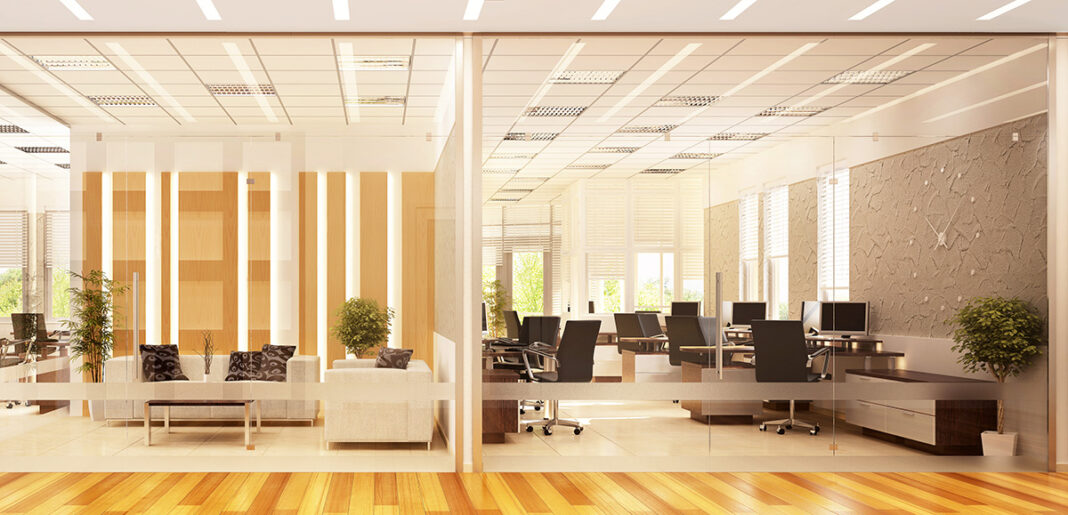Income growth is now a key determinant of property value and is off-setting macro headwinds for landlords who are staring down rising inflation, increased lending rates, softening yields and higher compliance thresholds.
Latest MSCI data from December 2022 highlights that income returns are propping up total returns in the commercial and industrial property sector – citing 5.3 percent for office and 4.1 percent for industrial – and signalling that this will strengthen further.
Rental growth is negating softer cap rates evidenced around the country, with signs that the higher rents being seen nationwide could continue this year.
In its latest Outlook Report, Bayleys’ global real estate partner Knight Frank said a renewed focus on income growth will guide investor strategy and asset selection during 2023, with a spotlight on lease structures that have the capability to ratchet up rents in line with higher inflation.
With office occupiers seeking higher amenity, “greener”, and modern fit-for-purpose buildings to help draw staff back to the office, and landlords across the commercial sector increasingly opting to upgrade sustainability credentials to address obsolescence issues with older buildings, rents have been on the march.
The flight-to-quality trend is not a flight of fancy – it’s tangibly altering the dynamics of the occupier market and resulting in historically-low vacancies and significant rental growth across prime properties.
Rising interest rates and tightening credit lines have contributed to dampened yields and lower sales transaction numbers across most markets, and with economists reluctant to definitively state when inflation and long-term interest rates could reach their peak, uncertainty still hovers for property owners.
Aggressive moves by the Reserve Bank of New Zealand (RBNZ) have impacted the commercial and industrial construction outlook and confidence, with caution being exercised.
Rider Levett Bucknall’s (RLB) latest Forecast Report 103 forecasts a slowing down of new activity and notes a decline in architects’ forward work on commercial projects comparable to that at Covid-19 onset and the GFC.
RLB’s construction cost indices show significant increases for developers in the last three years, and when coupled with substantially higher thresholds of design, resilience, sustainability and building code compliance, it is inevitable that higher rents will be needed to make new developments feasible.
New builds are establishing fresh rental benchmarks and landlords are looking for leases with mechanisms to regularly reset rents to market (rather than long periods with fixed increases) so they can optimise rental streams in a growth market.
Meanwhile, tenants need to get sound advice about rental budgets – particularly if they have an upcoming market rent review.
NZX-listed Precinct Properties documented in its 2022 annual report that its well-performing portfolio reflects the quality of occupiers, an overall portfolio WALT of 7.1 years and occupancy levels of 99 percent.
The report said rentals achieved on new office leases were on average 4.8 percent higher than valuation rents at 30 June 2021 and, including structured rent reviews, Precinct completed a total of 183,973sqm of reviews at a 3.0 percent premium to previous contract rental.
Further, there were 17,441sqm of market rent reviews settled at a 5.9 percent premium to 30 June 2021 valuation rentals.
Dire lack of new supply around the country has seen vacancy rates plummet, prompting owners of existing and dated stock to unlock measures to improve building quality, resilience and efficiencies to counteract rising interest rates and protect asset values.
Value-add mechanisms include creating more efficient yet reduced space footprints at a higher per square metre rental rate, providing quality end-of-trip facilities, leveraging shared meeting and event space, pursuing higher sustainability credentials via NABERSNZ or Green Star ratings, and providing responsive property management services.
David McGuinness, managing director (development), Willis Bond says delivering highly resilient, sustainable workplaces with quality amenity like its current projects at 110 Jervois Quay in Wellington’s CBD and Blue Mountains Campus, Upper Hutt, comes at a cost but rent is only one part of the equation for occupiers.
“As the return to the office continues, these buildings have intrinsic value for occupiers in helping drive higher productivity, team synergy, and business continuity.
“They also attract talent and deliver lower occupancy costs over time through more efficient, future-proofed buildings – it’s what businesses need and that’s why we are building them.
“Bell Gully is a great example of a business that has reset its staff and client experience in its new base-isolated building on Wellington’s waterfront – we understand staff love it and attendance at the office is very high, which is a pointer for other businesses.”
While there is a rental per square metre differential between premium A-grade space in the CBD versus regional locations, mainly due to land value, McGuinness says it’s not as much as people think and a focus on square metre rates doesn’t tell the full story.
“We are building New Zealand’s largest mass timber office building in Tauranga and the cost of this would be virtually the same in any New Zealand location putting aside land value and site specifics.
“The nature and quality of the building are the paramount drivers of rents and smart businesses focus on the efficiency of the space, potential for staff engagement and productivity, and how the premises connect with their customers and surroundings.”
Auckland
Bayleys Auckland leasing specialist Ben Wallace says given the depth of the corporate market and the limited supply of quality properties in desirable locations, rental rates for prime office space are holding firm, and in some instances, still on the rise.
“Occupiers often mistakenly assume that options will be plentiful when looking to relocate so there is often some educating required in the early stages of that process,” he says.
“Assuming they are paying a market-driven rent at the time, and want to remain in a specific geographic location whilst also maintaining a similar level of quality, it can be challenging to present alternative solutions at more competitive rental rates than they are currently paying.
“There is definitely a disconnect between the current levels of inflation and the level of rental growth occupiers are willing to commit to, but more than ever, occupiers are wanting certainty.”
Wallace says that the majority of deals they are concluding are with fixed annual increases of around three percent per annum, with reviews to market at renewal time.
“Most landlords accept that although inflation is running high, a fixed annual increase of three percent compounded over a number of years is likely to average out over time.
“Occupiers also want to partner and work collaboratively with proactive landlords for mutually-beneficial outcomes for all parties”.
Tauranga
Professional tenants are happy to pay a substantial premium over current market A-grade office leasing rates for top quality new-build office space in the Tauranga CBD as there’s such a shortage of it, according to Bayleys Tauranga commercial sales manager Mark Walton.
“The market is extremely tight so there’s significant competition for high-quality sustainability-focused space that is well-located for private and public transport, and offers modern, efficient workspace with ample amenity to encourage workers back to the office.
“Tenants are prepared and willing to pay what developers require to make these new office developments viable, however, there is resistance from occupiers to commit to CPI-linked rents, with a preference for fixed increases or, at a minimum, capped rental increases to allow for budgeting.”
Hamilton
In Hamilton, Bayleys Waikato commercial manager David Cashmore says lease negotiations can be protracted as tenants and landlords bring different subtleties to the table.
“Tenants want fixed rental increases to provide some certainty, while landlords prefer CPI-linked rents to accommodate rising costs – but we can generally get consensus to complete a deal.
“A significant portion of the tenant market is prioritising quality of space and staff productivity over rental rates, but obviously others are more conscious of outgoings and business bottom lines.”
Rhys Harvey, development director at leading Waikato construction firm Foster Group Limited, says to date, he’s not noted a tangible disconnect between landlords and occupiers over rental rates on new-build property, but he can see it coming.
“With developers and new-build landlords now dealing with rising yields and the escalating cost of capital, building and regulatory costs, rents will have to increase to get new builds across the line.
“There’s little negotiation flexibility or risk tolerance on rents and most of the tough conversations are around rent review ratchets, and cap and collars.
“However, most aspirational occupier groups know that the tight market means limited space options and their lens is generally more than just rent – it’s also retention and attraction of talent, plus the efficiencies and productivity modern office space allows.”
Related: Making an office fit-for-purpose












